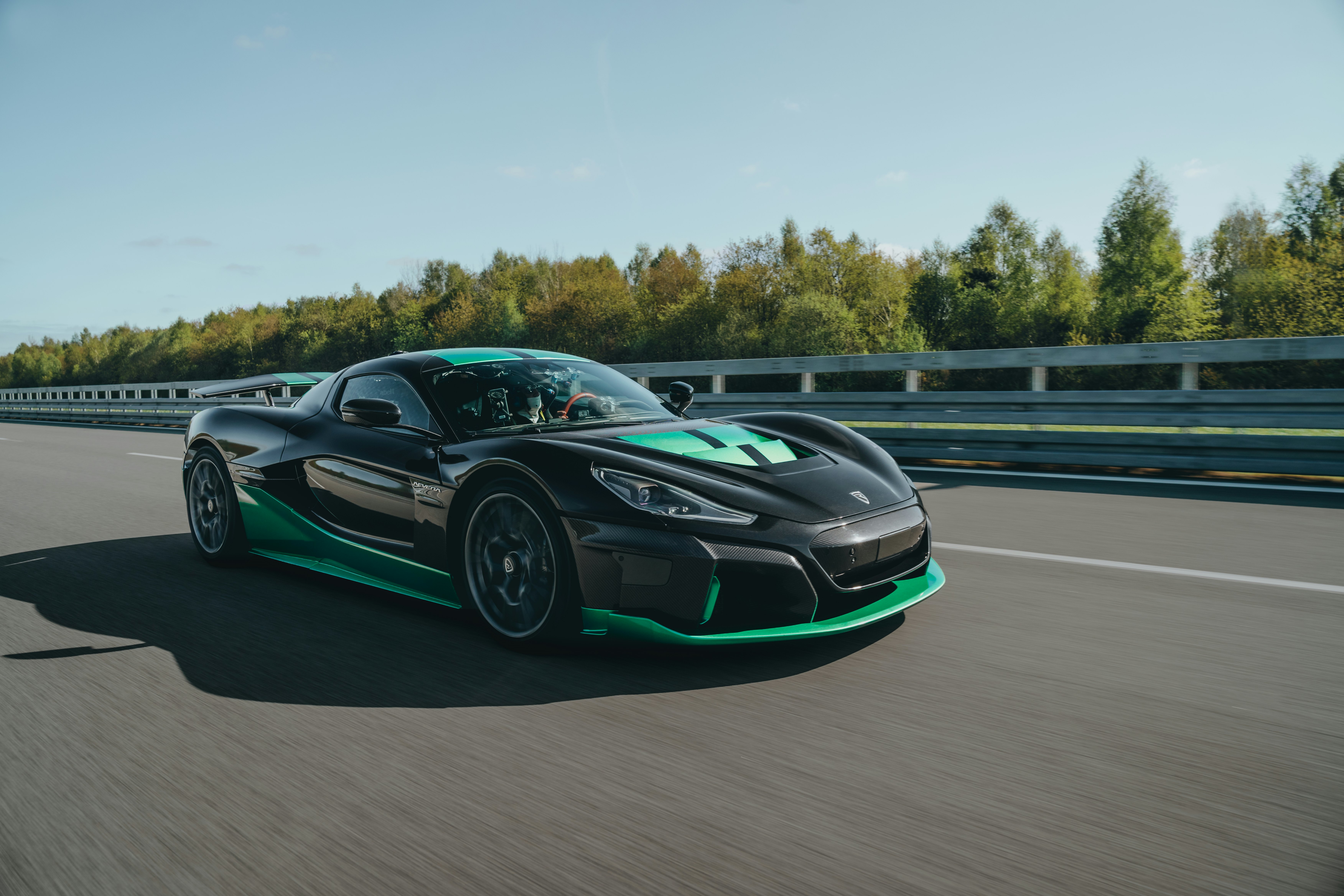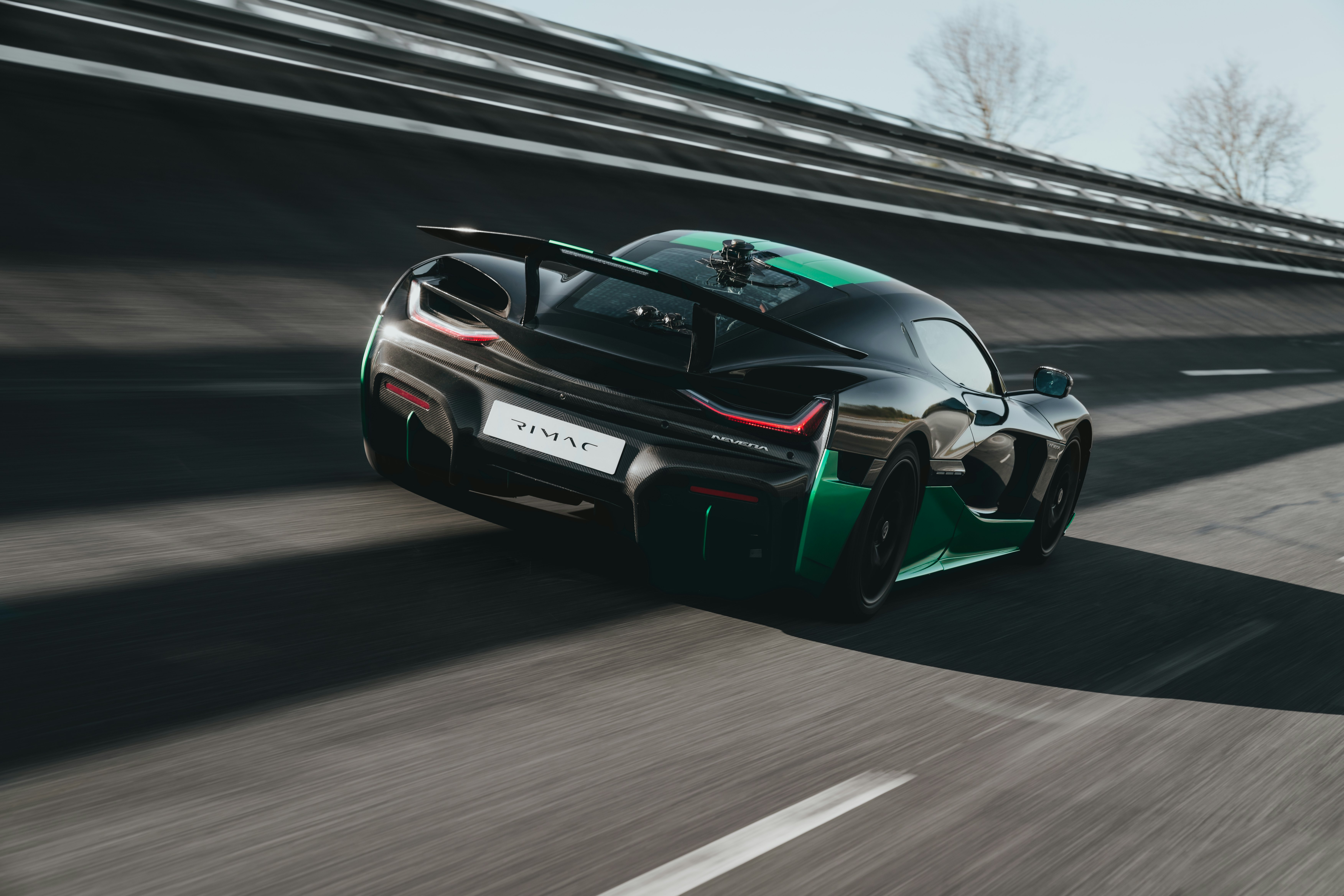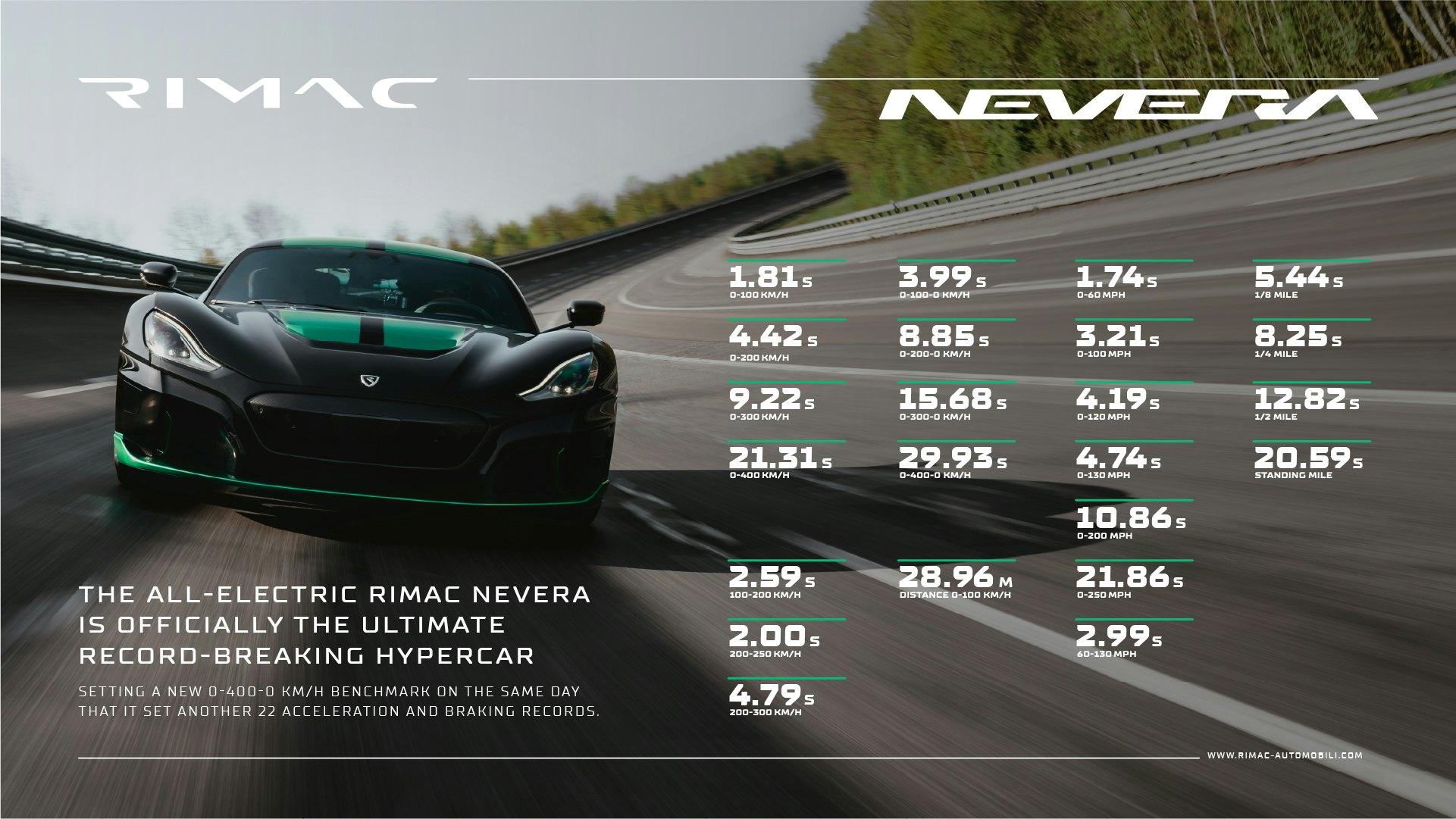
Rimac wasn’t happy with just having its Nevera be known as the fastest production model EV. Instead, Rimac took the Nevera to the track again and broke 23 performance records including the fastest 0 to 60 mph and fastest 0 to 400 km/h, or around 249 mph. Even more impressive, the Nevera secured all of these records in a day.
If you haven’t heard of Rimac, the EV startup based out of Croatia wowed the public with two conceptual EV supercars. The second concept, named the C_Two, was eventually turned into a production model EV called the Nevera.

Since then, Rimac has been carving out a name for its Nevera by showing off some absurd performance numbers and smashing records. Even before Rimac captured its recent 23 performance records, the Nevera set the highest speed record for an EV back in November at a blistering 258 mph.
EARNING THE HYPERCAR LABEL
Rimac achieved its performance records for the Nevera on a test track in Germany with verification from both Dewesoft and RaceLogic. On top of that, Nevera was running on road-legal Michelin Cup 2 R tires and non-prepped asphalt.
The Nevera hit 0 to 60 mph in 1.74 seconds, a 0 to 100km/h in around 1.82 seconds, and a 0 to 400 km/h in 21.32 seconds. Most importantly for hypercar benchmarks, the Nevera went from 0 to 400 km/h back down to 0 in 29.93 seconds.

Rimac built the Nevera with a motor in each wheel that provides 900 Nm of torque and 470 kW of power. On the inside, the hypercar uses an Nvidia Pegasus-based supercomputer to control the four powertrain systems.
With these performance-oriented numbers, you’d think the Nevera was just an EV meant to push numbers on a track. Still, the performance EV gets 300 miles on a single charge and goes from 0 to 80 percent charge in less than 20 minutes, according to Mate Rimac, founder and CEO of Rimac.
HYPER-EXPENSIVE
Even though the Nevera will be street-legal when it releases, it’s probably not advised to be ripping those high speeds in your own neighborhood. That doesn’t make it any less impressive that the Nevera is a production-level car, though. That means you can drive it to the track, where you can eventually unleash its full potential.

Of course, the Nevera is not meant for all of us. Rimac is only building 150 of these hypercars, which are expected to cost at least $2 million a unit. Rimac is still working on delivering its hypercar, but we’re already excited about the future of performance-based EVs thanks to the Nevera.







